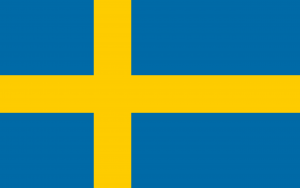Difference between revisions of "Language/Swedish/Grammar/Definite-and-indefinite-nouns"
m (Quick edit) |
m (Quick edit) |
||
| Line 7: | Line 7: | ||
In this lesson, you will learn about the difference between definite and indefinite nouns in Swedish and how to use them in sentences. | In this lesson, you will learn about the difference between definite and indefinite nouns in Swedish and how to use them in sentences. | ||
<span link>Don't hesitate to look into these other pages after completing this lesson: [[Language/Swedish/Grammar/Location|Location]] & [[Language/Swedish/Grammar/How-to-Use-Have|How to Use Have]].</span> | |||
== Definite articles == | == Definite articles == | ||
In Swedish, definite articles are used to specify a particular noun. There is only one definite article in Swedish which is "den" for common gender nouns and "det" for neuter gender nouns. The definite article for plural nouns is "de". | In Swedish, definite articles are used to specify a particular noun. There is only one definite article in Swedish which is "den" for common gender nouns and "det" for neuter gender nouns. The definite article for plural nouns is "de". | ||
| Line 99: | Line 101: | ||
# The boys – | # The boys – | ||
# A table – | # A table – | ||
<span class='maj'></span> | <span class='maj'></span> | ||
| Line 120: | Line 121: | ||
[[Category:0-to-A1-Course]] | [[Category:0-to-A1-Course]] | ||
[[Category:Swedish-0-to-A1-Course]] | [[Category:Swedish-0-to-A1-Course]] | ||
==Videos== | ==Videos== | ||
| Line 134: | Line 133: | ||
<youtube>https://www.youtube.com/watch?v=_V9YYcMhlp4</youtube> | <youtube>https://www.youtube.com/watch?v=_V9YYcMhlp4</youtube> | ||
==Other Lessons== | |||
== | |||
* [[Language/Swedish/Grammar/Personal-pronouns|Personal pronouns]] | * [[Language/Swedish/Grammar/Personal-pronouns|Personal pronouns]] | ||
* [[Language/Swedish/Grammar/How-to-Describe-Someone's-Appearance-and-Personality|How to Describe Someone's Appearance and Personality]] | * [[Language/Swedish/Grammar/How-to-Describe-Someone's-Appearance-and-Personality|How to Describe Someone's Appearance and Personality]] | ||
| Line 148: | Line 146: | ||
{{Swedish-Page-Bottom}} | {{Swedish-Page-Bottom}} | ||
<span links></span> | |||
Revision as of 22:44, 27 March 2023
In this lesson, you will learn about the difference between definite and indefinite nouns in Swedish and how to use them in sentences.
Don't hesitate to look into these other pages after completing this lesson: Location & How to Use Have.
Definite articles
In Swedish, definite articles are used to specify a particular noun. There is only one definite article in Swedish which is "den" for common gender nouns and "det" for neuter gender nouns. The definite article for plural nouns is "de".
Common gender nouns
For common gender nouns, the definite article "den" is added before the noun. The definite article takes different endings depending on the gender of the noun.
The endings for common gender definite articles are:
- -en for singular definite
- -n for singular definite, if the noun ends with a vowel or a vowel sound
- -erna for plural definite
Below are some examples:
| Swedish | Pronunciation | English | |||
|---|---|---|---|---|---|
| en bil | ['beːl] | a car | den bilen | ['beːlen] | the car |
| en flicka | ['flɪk:a] | a girl | flickan | ['flɪkan] | the girl |
| en katt | ['kat:] | a cat | katten | ['katen] | the cat |
Neuter gender nouns
For neuter gender nouns, the definite article "det" is added before the noun. Neuter gender definite articles only have one ending which is "-et".
Below are some examples:
| Swedish | Pronunciation | English | |||
|---|---|---|---|---|---|
| ett äpple | [ɛt ˈɛpː.lɛ] | an apple | äpplet | [ɛpː.lɛt] | the apple |
| ett bord | [ɛt boːr:d] | a table | bordet | [boːr:dɛt] | the table |
| ett ägg | [ɛt ɛɡː] | an egg | ägget | [ɛɡːɛt] | the egg |
Plural nouns
For plural nouns, the definite article "de" is added before the noun. The plural definite article only has one ending which is "-na".
Below are some examples:
| Swedish | Pronunciation | English | |||
|---|---|---|---|---|---|
| hundar | ['hɵnːdar] | dogs | hundarna | ['hɵnːdarna] | the dogs |
| bilar | ['biːlar] | cars | bilarna | ['biːlarna] | the cars |
| elever | [ɛ'lɛver] | pupils | eleverna | [ɛ'lɛverna] | the pupils |
Indefinite articles
In Swedish, indefinite articles are used to refer to a non-specific noun. Swedish has two indefinite articles depending on the gender of the noun: "en" for common gender nouns and "ett" for neuter gender nouns. There is no indefinite article for plural nouns.
Below are some examples:
| Swedish | Pronunciation | English | |||||||||
|---|---|---|---|---|---|---|---|---|---|---|---|
| en bil | ['beːl] | a car | ett äpple | [ɛt ˈɛpː.lɛ] | an apple | en flicka | ['flɪk:a] | a girl | ett bord | [ɛt boːr:d] | a table |
Summary
- Definite articles are used to specify a particular noun in Swedish. - Indefinite articles are used to refer to a non-specific noun in Swedish. - The definite article for common gender nouns is "den". - The definite article for neuter gender nouns is "det". - The definite article for plural nouns is "de". - The indefinite article for common gender nouns is "en". - The indefinite article for neuter gender nouns is "ett".
Exercises
- Translate the following phrases into Swedish:
- A dog –
- The cat -
- Some apples–
- The boys –
- A table –
Sources
- Swedish grammar - Wikipedia
- Swedish Nouns, Articles, and Demonstratives - ielanguages.com
- The Swedish Definite vs. Indefinite | Swedish Language Blog
- Swedish/Nouns - Wikibooks, open books for an open world
